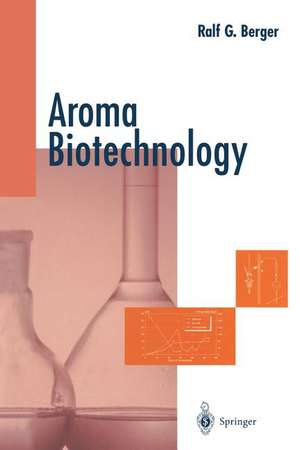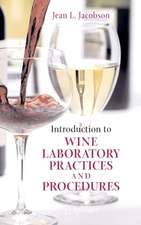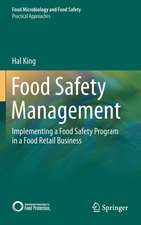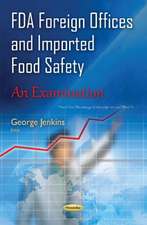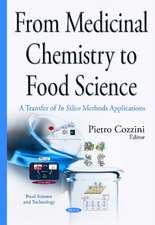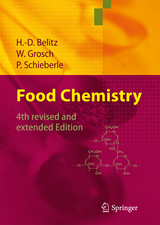Aroma Biotechnology
Autor Ralf G. Bergeren Limba Engleză Paperback – 8 dec 2011
Preț: 385.84 lei
Nou
Puncte Express: 579
Preț estimativ în valută:
73.84€ • 76.81$ • 60.96£
73.84€ • 76.81$ • 60.96£
Carte tipărită la comandă
Livrare economică 14-28 aprilie
Preluare comenzi: 021 569.72.76
Specificații
ISBN-13: 9783642793752
ISBN-10: 3642793754
Pagini: 256
Ilustrații: X, 240 p.
Dimensiuni: 155 x 235 x 13 mm
Greutate: 0.36 kg
Ediția:Softcover reprint of the original 1st ed. 1995
Editura: Springer Berlin, Heidelberg
Colecția Springer
Locul publicării:Berlin, Heidelberg, Germany
ISBN-10: 3642793754
Pagini: 256
Ilustrații: X, 240 p.
Dimensiuni: 155 x 235 x 13 mm
Greutate: 0.36 kg
Ediția:Softcover reprint of the original 1st ed. 1995
Editura: Springer Berlin, Heidelberg
Colecția Springer
Locul publicării:Berlin, Heidelberg, Germany
Public țintă
ResearchCuprins
1 Aroma Compounds in Food.- 1.1 Aroma, Flavor, and Fragrance Compounds.- 1.2 Character Impact Components.- 1.3 Categories of Aromas.- 1.4 Functions of Aromas.- 1.5 Bioactivity of Aromas.- 2 The Roots: Empirical Food Biotechnologies and Formation of Aroma Compounds.- 2.1 Characterization of Yeasts.- 2.2 Aroma Development in Beer.- 2.3 Aroma Development in Wine.- 2.4 Yeast Cells As a Source of Aroma.- 2.5 Aromas of Fermented Milk.- 2.6 Bakery Products.- 2.7 Nondairy Acidic Fermentations.- 2.8 Fermented Plant Materials.- 2.9 Ethnic Food.- 2.10 Aroma Enhancement by Mixed Cultures.- 2.11 Conclusions.- 3 Why Novel Biotechnology of Aromas?.- 3.1 Aromas from Living Cells.- 3.2 The Legal Situation.- 3.3 The Potential of Biocatalysts.- 4 Laboratory Requirements and Techniques.- 4.1 Laboratory Equipment.- 4.2 The Biological Materials.- 4.3 Laboratory-Scale Cultivation.- 4.4 Nutrient Media.- 4.5 Analysis of Nonvolatiles.- 4.6 Analysis of Volatile Bioflavors.- 5 Aroma Compounds from Microbial De Novo Synthesis.- 5.1 A Short History of Bioflavors.- 5.2 Oligo - Isoprenoids.- 5.3 Aliphatics.- 5.4 Aromatics.- 5.5 Degradation of Off-Odor.- 5.6 Are Microbial Volatiles Secondary Metabolites?.- 6 Biotransformation/Bioconversion.- 6.1 Monoterpenes.- 6.2 Sesquiterpenes.- 6.3 Fatty Acid Derivatives.- 6.4 Aromatics and Heterocycles.- 7 Enzyme Technology.- 7.1 Lipases.- 7.2 Carbohydrases.- 7.3 Proteases.- 7.4 Oxidoreductases.- 7.5 Miscellaneous Enzymes.- 7.6 Cofactor Recycling.- 8 Genetically Altered Catalysts.- 8.1 Mutants and Fusants.- 8.2 In Vitro rDNA Technique.- 9 Plant Catalysts.- 9.1 Plant Enzymes.- 9.2 Precursor Atmosphere Stored Fruits.- 9.3 In Vitro Plant Cell Culture.- 10 Bioprocess Technology.- 10.1 Bioreactor Design.- 10.2 Process Monitoring.- 10.3 Downstreaming Volatile Flavors.- 11 Toward an Industrial Application.- 11.1 Rapid Process Improvement.- 11.2 Scaling-Up.- 11.3 Profitability Aspects.- 11.4 Present Industrial Applications.- 12 Outlook.- References.
Recenzii
"...a very welcome publication since, at last, one can find a sound introduction to the entire field of flavour biotechnology in one compact volume." - Int. J. of Cosmetic Science "Though a short book...it is dense with information from the diverse, multidisciplinary literature...an extremely comprehensive, interesting and useful review" - Food Australia
Textul de pe ultima copertă
Aroma biotechnology opens access to natural volatile flavors. Due to the attribute of "naturalness" these aromas are the most valuable ingredients for foods, cosmetics and related products. Due to problems of supply from agricultural sources, legal restrictions and numerous advances in cell biochemistry and bioengineering the manufacturing of aromas and flavors using bioprocesses has developed dramatically during the last decade. The author describes biocatalyzed and biogenetic routes leading to aromas and flavor compounds and he depicts in detail their utilisation in industrial scale processes. All the important topics, including de-novo-synthesis, genetic engineering, in vitro rDNA methods, laboratory requirements and techniques, upscaling, product recovery, profitability, and legal aspects are covered. R.G. Berger contributes his own experimental experience to all except one chapter and leads the reader into state-of-the-art aroma biotechnology.
